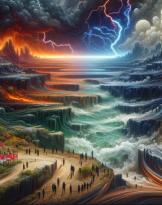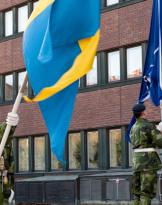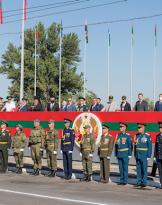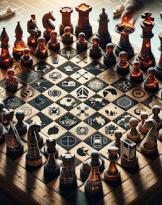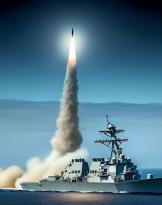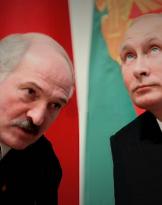Thirty years ago the Berlin Wall fell: perhaps the most famous among the symbols of the Cold War. It had been built in one night, between 12 and 13 August 1961, to prevent the escape to the west of citizens of the German Democratic Republic (DDR), but also to mark a clear separation between the two opposing blocks at the time. More than 155 km long, it was manned by armed guards, barbed wire, dogs and mines; it did not just pass through the center of the city but surrounded it completely, cutting it off from East Germany.
In the 28 years in which he separated the two Germans, over 5000 citizens of the East tried to escape, some in a daring way: like the acrobat Horst Klein who in the 1963 walked on an electric wire to 18 meters high, or Gunter Wetze, that crossed the border on an air balloon built with old blankets. Not to mention the dozens of people who tried to escape using underground tunnels.
Others, on the other hand, tried their luck in the most ancient way: running off their feet and turning their backs to the Grenztruppen (the border guards) who were ordered to shoot at sight against any attempt to escape. It was a silent massacre, impossible to know the number of the many who lost your life.
The fall of the wall was a liberating act for the free world, the start of a humiliated humanity, even more so because it was located in the heart of Europe: the land of individual liberties and human rights.
 Its destruction meant the beginning of the end of the Soviet Union and, for NATO that had fought that war, the certainty of the final victory: rarely, in fact, especially in the West, is reflected on the fact that the cold war was a war however fought and won.
Its destruction meant the beginning of the end of the Soviet Union and, for NATO that had fought that war, the certainty of the final victory: rarely, in fact, especially in the West, is reflected on the fact that the cold war was a war however fought and won.
We owe the news to an ANSA chronicler, Riccardo Erhman, the only journalist who, during the press conference with which the DDR Propaganda minister, Schabowski, suddenly announced the opening of the passage to the west, had the readiness to ask him : "since when?"
"Immediately", was the response and agencies around the world beat her to the four corners of the planet, with the result that soon thereafter, thousands of East Germans rushed to the border to cross it.
It was the end of an era. It was thought that a new era of humanity was at the door, finally a bearer of peace and prosperity. The US political scientist, Francis Fukuyama, in a very famous article published by "The National Interest" - the most important quarterly of US geopolitics - even spoke of "end of history", in the sense of a world inexorably directed towards the triumph of liberal democratic regimes and of globalized capitalism.
We all know that it did not happen that way. Liberal democracy is increasingly undermined by the new means of digital communication that convey the messages of new powers to masses dramatically lacking in critical sense, more interested in confirming their opinions already acquired than confronting those of others, perhaps reading a book or an article.
Globalization, on the other hand, has certainly removed millions of workers in third world countries from poverty, but has significantly reduced the Western middle class: the one on which technological progress and consumption capacity has always been based.
 Finally, other walls have arisen. From many parts. Only to stay in Europe, they are seen between Bulgaria and Turkey, between Hungary and Serbia, between Denmark and Germany (the latter only to combat the spread of African swine fever, for now.).
Finally, other walls have arisen. From many parts. Only to stay in Europe, they are seen between Bulgaria and Turkey, between Hungary and Serbia, between Denmark and Germany (the latter only to combat the spread of African swine fever, for now.).
Then there is the Evros wall, on the border between Greece and Turkey, built by the Greek government in 2012 to stop illegal immigration; that of Ceuta and Melilla, the Spanish enclaves in North Africa.
Finally, 99 are the walls that separate Protestant and Catholic communities from Belfast.
And, to widen your gaze, who has not heard of the wall that divides Israel from the Palestinian territories or what it plans to build President Trump on the border with Mexico?
The fall of the Berlin Wall, today, is to be understood only as the symbol of Western victory, its economic model and political representation, on the centralized Soviet one.
The many walls still existing, and those that will soon be, are to show us every day that the era of "limes" is far from ending.
Photo: IDF / RIA Novosti archive / US DoD



